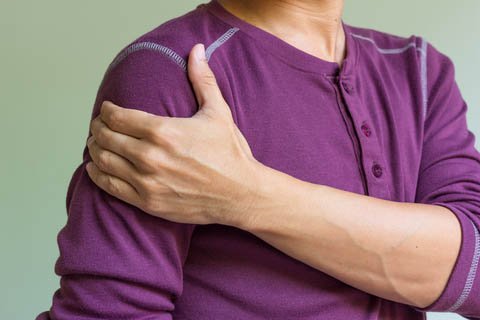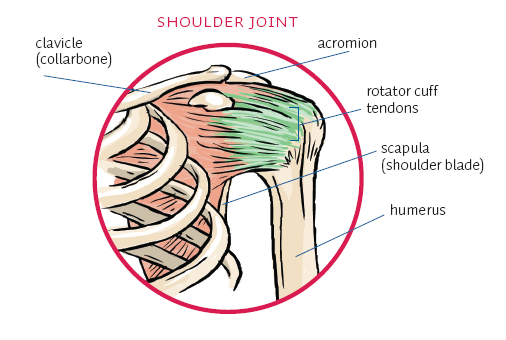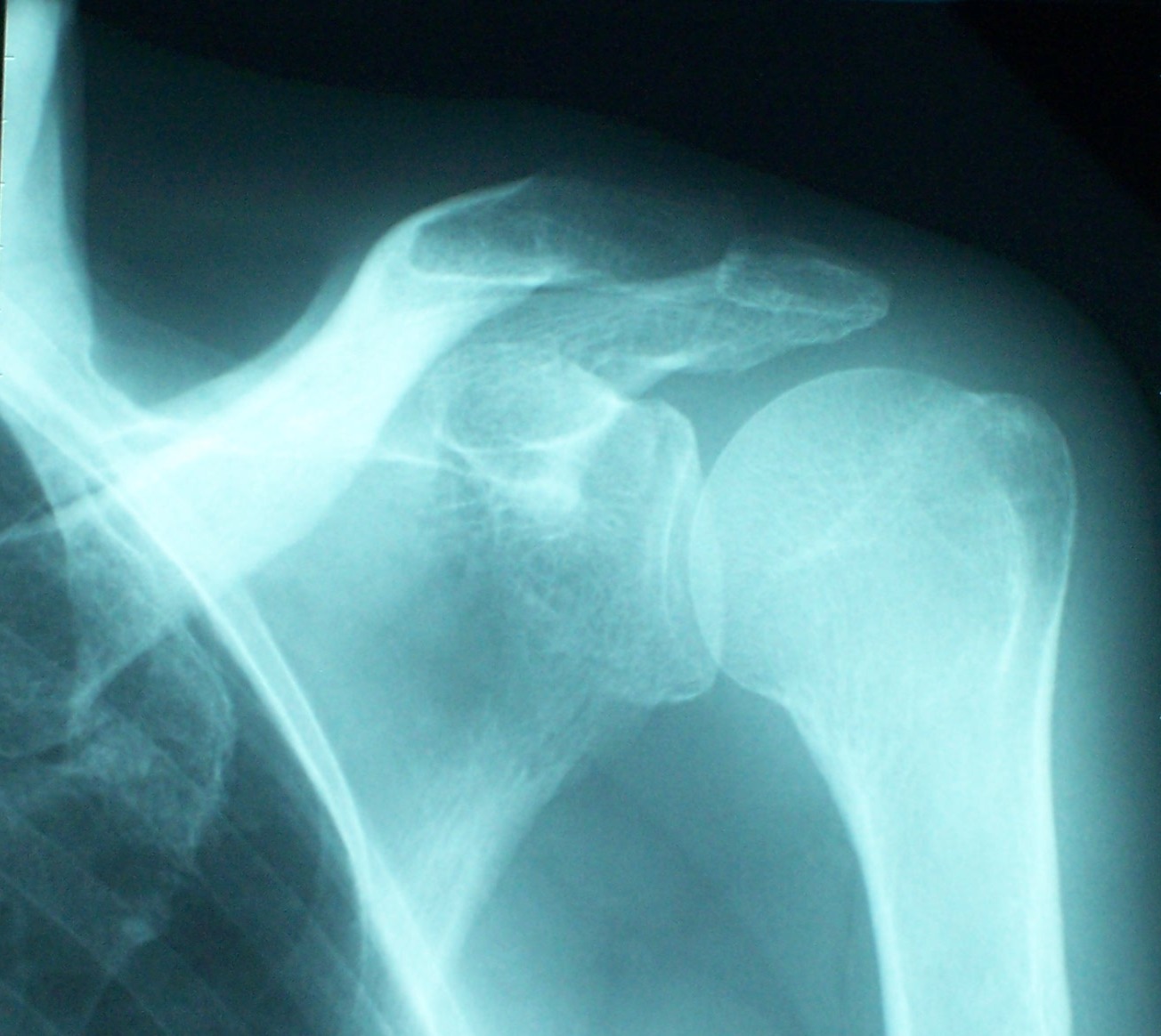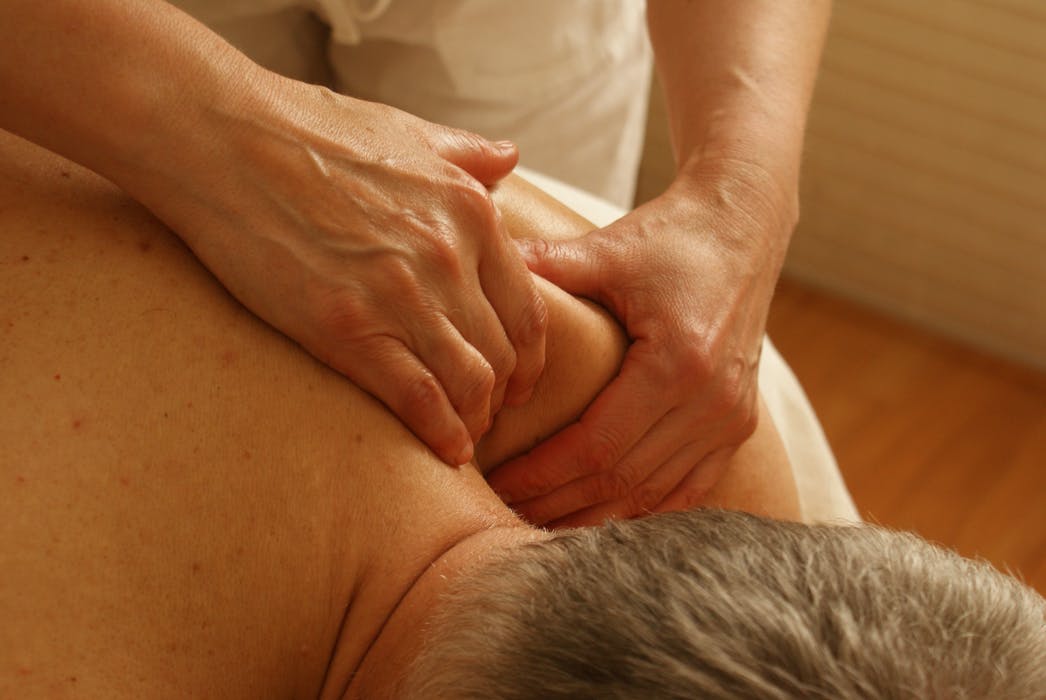nalco group
bone, muscle & joint pain physio
BOOK NOW / WHATSAPP ABOUT YOUR PAIN OR INJURY
- NOVENA 10 Sinaran Drive, Novena Medical Center #10-09, Singapore 307506
- TAMPINES 9 Tampines Grande #01-20 Singapore 528735
- SERANGOON 265 Serangoon Central Drive #04-269 Singapore 550265
Home > Blog > Physiotherapy > Osteoarthritis Physiotherapy > Conditions > Shoulder Pain > Shoulder Osteoarthritis Physiotherapy
Shoulder Osteoarthritis Physiotherapy

Shoulder osteoarthritis (OA) refers to a painful shoulder condition that occurs when the cartilage that lines the sides of the shoulder joint is worn or torn away. It may be caused by injury or
- dislocation of the shoulder
- direct trauma to the shoulder from a fall or accidents
- “wear and tear” of the shoulder over time
Shoulder OA develops most often in people in their 50s and beyond. As people misuse or overuse their joints over time, more and more shoulder osteoarthritis cases are seen with each advancing decade of life.
That being said, shoulder OA can also develop in younger people after trauma or surgery to a joint. The condition occurs more frequently in women than men. Our senior physiotherapists treat shoulder OA with hands-on therapy and individualized exercise programs.
Other Arthritis Resources:
What is Osteoarthritis of the Shoulder?
Shoulder osteoarthritis (OA) happens when the cartilage that lines the opposite sides of the shoulder joint becomes worn or torn. In the early stages of the condition, small pits develop in the smooth cartilage that lines each side of the joint.
Eventually, small protrusions of bone, or "bone spurs" develop at the edges of the shoulder joint surfaces. Joint fluid may also accumulate under the cartilage, forming cysts, which can put pressure on the bone and may contribute to pain.
In the late stages of the condition, the cartilage can wear away completely, allowing painful shoulder joint bone-to-bone contact.

Two bones make up the shoulder joint.
The bone at the top of the arm, the humerus, has a round, ball-shaped head, covered in cartilage. The bone on the body side of the joint is the scapula, or shoulder blade. The flat, cartilage-covered surface on the scapula that makes the other half of the shoulder joint is called the glenoid.
The 2 sides of the shoulder joint are surrounded and connected by ligaments that control motion in the joint. The ligaments at the front of the shoulder become tightened as OA progresses.
In addition, the four main muscles that surround the shoulder, known as the rotator cuff, may be over-used, weaken, or even tear. Rotator cuff conditions happens in about 90% of people with shoulder osteoarthritis.
How Does shoulder osteoarthritis Feel like?
Shoulder OA may cause you to experience:
- Pain with activities that relieves with rest
- Decreased shoulder movement (range of motion), especially when reaching back as if grabbing a seat belt
- Weakness
- Shoulder joint stiffness and eventual difficulty using the affected arm
- Pain at rest and difficulty sleeping as the condition worsens
How Is It Diagnosed?

Your doctor may order an x-ray to determine the amount of change in the painful shoulder joint.
As the cartilage wears down, it decreases the space between the bones visible on these images. Bone spurs or cysts may also be present. Apparent damage often may not directly correlate with your shoulder pain. If there is suspected loss of bone, a CAT scan (computerized topography) may be ordered to get a clearer picture of the area.
Our senior physiotherapists will ask questions about how the shoulder problem is affecting your life, and what activities are now difficult for you. Describing your pain will help determine the best plan for your treatment.
We will evaluate how far the shoulder can move, both as you move your arm and as he or she moves it for you. The examination will include evaluating the strength of the muscles of the rotator cuff and those that support the shoulder blade.
We may look at your posture and how you perform certain activities and movements to see how they affect your shoulder.
how our senior physiotherapists can help you
Conservative Shoulder Management (Without Surgery)
Whenever a patient develops shoulder pain, the first recommended treatment is shoulder physiotherapy.
The following shoulder physitotherapy treatments can help
- decrease pain
- improve movement
- and allow increased use of your shoulder for daily activities
They may prolong the time until surgery is needed, or help you avoid it altogether.
Improving tolerance of daily activities
We will work with you to help you get back to performing
your daily tasks. Just changing your posture can reduce the pressure
and forces at the joint and help reduce your pain. We may
recommend the use of physical therapy treatment modalities such as
- heat therapy
- cold therapy
- ultrasound therapy
- radio-frequency Indiba physiotherapy
- deep tissue release
- stretching exercise
- strengthening exercise
as well as teach you about proper movement, and help you modify your
activities to control your pain.
Improving shoulder mobility
We can recommend ways to restore shoulder movement (range of motion). Stretching can lengthen tight muscles and ligaments, improving your posture and movement. Shoulder-joint mobilization may help improve movement and ease your pain.
We may gently move your shoulder (manual therapy), to stretch the ligaments in ways normal stretching or arm motions do not.
Improving the strength of your muscles
Strengthening the rotator cuff muscles can reduce the friction caused by the rough arthritic surfaces of the shoulder joint rubbing together. Support from the muscles that maintain your posture can help reduce forces on the shoulder joint.
Other options for treatment may include medications such as steroids or nonsteroidal anti-inflammatory drugs (NSAIDs). Injections of steroid or anesthetic medications may also help.

Following Shoulder Surgery
There are several surgical options for treating shoulder OA, depending on the degree of damage at the joint and its surrounding structures, and your age, activity level, and occupation.
Palliative Options
The goal of this surgery is to resolve symptoms; it does not restore or reconstruct the arthritic area. This option is best for people under the age of 65 with minimal cartilage problems, or people in their 20s to 40s with many active years ahead.
Reparative, Restorative, and Reconstructive Options
Over the last several years, surgeons have developed new "biologic resurfacing" techniques for younger people who have shoulder osteoarthritis who are not yet ready for total shoulder replacement.
Your doctor and our senior physiotherapists can describe them in detail for you.
Total Shoulder Arthroplasty (TSA)
Total shoulder arthroplasty is the medical term for a shoulder replacement. This is the best surgical technique for older patients with advanced OA who have good quality of bone at the shoulder joint and intact rotator cuff muscles.
This procedure is best for people who do not plan to do high-level activities (overhead work at a job, overhead sports, or significant amounts of heavy lifting).
Shoulder Hemiarthroplasty
Shoulder hemiarthroplasty is a partial replacement of the joint. It is an option if the muscles that make up the rotator cuff of the shoulder are too weak or damaged to properly support and move the joint.
Reverse (Inverse) Total Shoulder Arthroplasty (rTSA)
This surgery is also an option when the muscles that make up the rotator cuff of the shoulder have failed or are irreparable, or a complex fracture is present.
Arthroscopy
Many shoulder surgeries can be done via arthroscopy, a less invasive surgery by which the surgeon makes small incisions in the skin and inserts pencil-sized instruments (with a camera) into the joint to repair damage.
Postsurgical physical therapy varies based on the procedure performed. It may include:
Ensuring your safety as you heal
Your surgeon and our senior physiotherapists will work together as a team to return your shoulder to health. After the surgeon completes his or her work, your work begins. You will perform specific activities and exercises at the correct time to allow for optimal healing.
All surgical procedures modify your shoulder joint and surrounding tissues. Restorative and reconstructive options may take several months to heal, with longer precautions.
Aiding motion of the shoulder
After surgery, your shoulder will be sore and swollen, and you may not feel like moving your arm. However, gentle motion is often recommended. Our senior physiotherapists may move your arm or assist you in moving your arm to begin to gently restore movement.
After some surgeries, movement is restricted during healing; your physical therapist and surgeon will choose the best options for recovery and guide you through the process.
Strengthening the shoulder
Due to prior disuse or postoperative pain, your muscles may not be as strong as normal. If the muscle was repaired during surgery, you will have to let it heal for a period of time, and we can let you know what activity is safe to help the healing along.
Relieving your pain
Using manual (hands-on) therapies and other modalities such as
- heat therapy
- cold therapy
- ultrasound therapy
- radio-frequency Indiba physiotherapy
- deep tissue release
- stretching exercise
- strengthening exercise
- we can help reduce your pain during exercise and daily activities.
Getting back to work and activities of daily living
Returning to work and daily activities may be slow, and your physical therapist will guide you through the process to achieve the best results.
